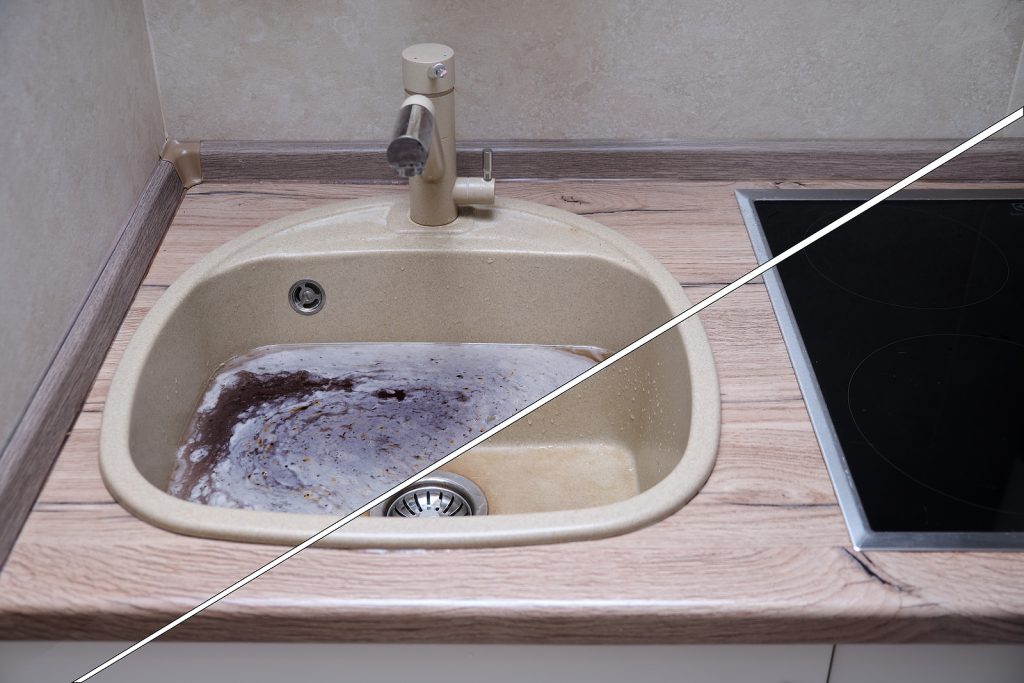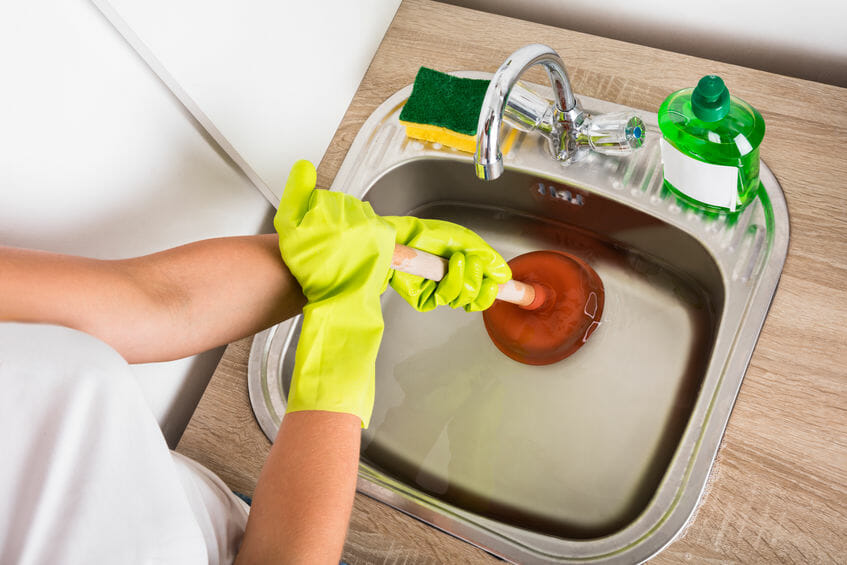Exposing 5 Effective Sink Unclogging Strategies
Exposing 5 Effective Sink Unclogging Strategies
Blog Article
We have unearthed this post relating to Repairing Common Household Plumbing Issues directly below on the web and felt it made perfect sense to relate it with you on my blog.

In this short article, we will be checking out 5 basic steps you might take to free your kitchen sink from blockages as well as save you from the pain and humiliation of managing a clogged up cooking area sink.
Blocked cooking area sinks are among the most usual water drainage problems property owners deal with. And also what's even more, it's a undesirable and also extremely unpleasant sight. Think of mosting likely to the sink to do your dishes as well as figuring out that the drain is clogged as well as water can not flow down conveniently.
A lot of clogged drains are caused by food particles, fat, soap, and also oil fragments. They clog the sink as well as make it hard for water to go down the drain quickly. While it is appealing to put a call through to the plumbing technicians, there are a couple of DIY hacks you might attempt first prior to making that telephone call.
1. Baking Soda and Vinegar
In contrast to making use of any kind of kind of chemicals or bleach, this method is safer as well as not dangerous to you or your sink. Sodium bicarbonate as well as vinegar are everyday home products used for many various other points, as well as they can do the trick to your kitchen sink.
Firstly, eliminate any kind of water that is left in the sink with a cup.
Then pour a good quantity of baking soda away.
Pour in one cup of vinegar.
Seal the drain opening and permit it to go for some mins.
Pour hot water away to dissolve various other persistent residue and bits.
Following this easy technique might work, and also you can have your kitchen sink back. Repeat the process as much as you deem necessary to rid the sink of this particles completely.
2. Attempt a Plunger
If the trouble is not from the garbage disposal, you can attempt using a bettor. Bettors are common residence devices for this event, as well as they can be available in helpful if you utilize them appropriately. A flat-bottomed plunger is most appropriate for this, however you can make do with what you have is a commode bettor.
Adhere to the following basic steps to use the bettor successfully:
Secure the drainpipe with a cloth and load the sink with some warm water
Place the plunger ready over the drainpipe as well as start diving
Check to see if the water runs easily after a couple of plunges
Repeat the process up until the drainage is totally free
3. Possibly it's the Garbage Disposal
In numerous instances, the blockage may be due to an obstruction in the disposal. Use pliers instead.
You can discover the following option to unclog your cooking area sink if this does not work.
4. Make use of a Hanger
Using a cable fabric hanger or a plumber's serpent if you have one can do the method. All you need do is straighten the wall mount to go down the drain while you carefully select out the bits triggering the obstruction.
Run hot water down the tubes after this to see just how successful you were.
5. Use Boiling Water
When faced with a clogged up sink, the first thing you need to attempt is to put boiling water down the drain. That is about the most simple treatment to stopped up sinks as well as drainages. Boiling water helps neutralize the particles as well as debris triggering the blockage, specifically if it's grease, oil, or soap bits, and also oftentimes, it can flush it all down, as well as your sink will certainly be back to typical.
Do not try this technique if you have plastic pipes (PVC) because hot water could melt the lines as well as create more damages. If you make use of plastic pipelines, you may wish to stick to utilizing a bettor to get debris out.
Using this method, turn on the faucet to see just how water moves after pouring warm water down the tubes. Attempt the process once more if the blockage lingers. However, the clog could be much more relentless sometimes and also need more than just boiling water.
Final Words
Attempting these couple of tricks might save you the expenses of having a plumber check it. In numerous situations, a plumber is what we require. In cases where you locate it tough to unclog the sink even after trying all these approaches, it might be time to leave it to the experts.
Contact professional plumbing firms to fix your drain issues and various other different family plumbing demands.
Blocked kitchen sinks are one of the most usual drain problems home owners encounter. Imagine going to the sink to do your dishes and discovering out that the drain is obstructed and water can not move down conveniently.
They block the sink and make it hard for water to go down the drain quickly. When faced with a clogged up sink, the very first thing you must attempt is to pour boiling water down the drain. Boiling water assists counteract the particles and particles creating the clog, especially if it's soap, oil, or oil particles, and in numerous instances, it can purge it all down, and also your sink will certainly be back to regular.
How to Unclog a Kitchen Sink
Take the Plunge
Start your efforts by plunging. Use a plunger with a large rubber bell and a sturdy handle. Before getting to work on the drain, clamp the drain line to the dishwasher. If you don t close the line, plunging could force dirty water into the dishwasher.
Fill the sink with several inches of water. This ensures a good seal over the drain.
If you have a double sink, plug the other drain with a wet rag or strainer.
Insert the plunger at an angle, making sure water, not air, fills the bell.
Plunge forcefully several times. Pop off the plunger.
Repeat plunging and popping several times until the water drains.Clean the Trap
The P-trap is the curved pipe under the sink. The trap arm is the straight pipe that attaches to the P-trap and runs to the drain stub-out on the wall. Grease and debris can block this section of pipe. Here s how to unclog a kitchen sink by cleaning out the trap:
Remove as much standing water from the sink as possible.
Place a bucket under the pipe to catch the water as it drains.
Unscrew the slip nuts at both ends of the P-trap. Use slip-joint pliers and work carefully to avoid damaging the pipes or fasteners.
If you find a clog, remove it. Reassemble the trap.
If the P-trap isn t clogged, remove the trap arm and look for clogs there. Run the tip of a screwdriver into the drain stub-out to fetch nearby gunk.Spin the Auger
With the trap disassembled, you re ready to crank the auger down the drain line.
Pull a 12-inch length of cable from the auger and tighten the setscrew.
Insert the auger into the drain line, easing it into the pipe.
Feed the cable into the line until you feel an obstruction. Pull out more cable if you need to.
If you come to a clog, crank and push the cable until you feel it break through. The cable will lose tension when this happens.
Crank counterclockwise to pull out the cable, catching the grime and debris with a rag as the cable retracts.

I found that blog posting about Fixing Typical Household Plumbing Problems while scouting around the web. Sharing is nice. Helping others is fun. Thanks a lot for your time. Don't forget to come by our site back soon.
Ensure plumbing safety. Report this page